Interview: Alumna Lili Lea Abraham, Art Director of Andrea Arnold's Palme d'Or competitor "Bird"
When Lili Lea Abraham was selected for Berlinale Talents in 2020, she already had plenty of professional accomplishments under her belt, having worked as production designer on a number of award-winning short films such as Barnaby Blackburn's "Wale", and winning her own awards like the British Film Designers Guild Best Production Design In Short Film 2022 for Cassiah Joski – Jethi's "Catch a Butcher". Since her time in Berlin, her star has continued to rise, working on high profile TV dramas such as ITV's "The Ipcress File" and HBO's "The Regime" as well as one of the year's biggest films, Yorgos Lanthimos' "Poor Things".
Now she's in Cannes, having art directed Andrea Arnold's highly anticipated latest feature "Bird". While there, she took the time to have a chat with us about her work.
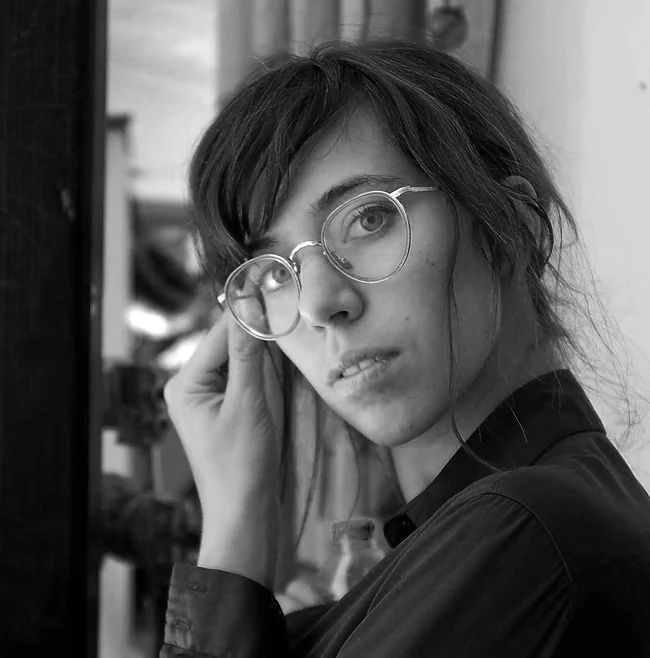
Congratulations on the Cannes selection. How does it feel to have your work acknowledged in one of the world’s most prestigious competitions?
It is of course an incredible privilege to have worked on a film selected to compete for the Palme d'Or. I also had the luck to come to Cannes last year with [Ken Loach's] "The Old Oak", on which I was also the art director.
The most meaningful aspect for me in this is that I know the film will get to the audience; it will have the chance to be seen, connect and resonate. During the making of "Bird" I, and I believe the whole team, felt that we were part of the creation of a film and a story that was really worth telling. A sense of purpose in the making of a film is a feeling I really cherish. That great sense of importance came from how inspiring the script was yes, but also how both the story itself and the making of it were so deeply rooted in the community.
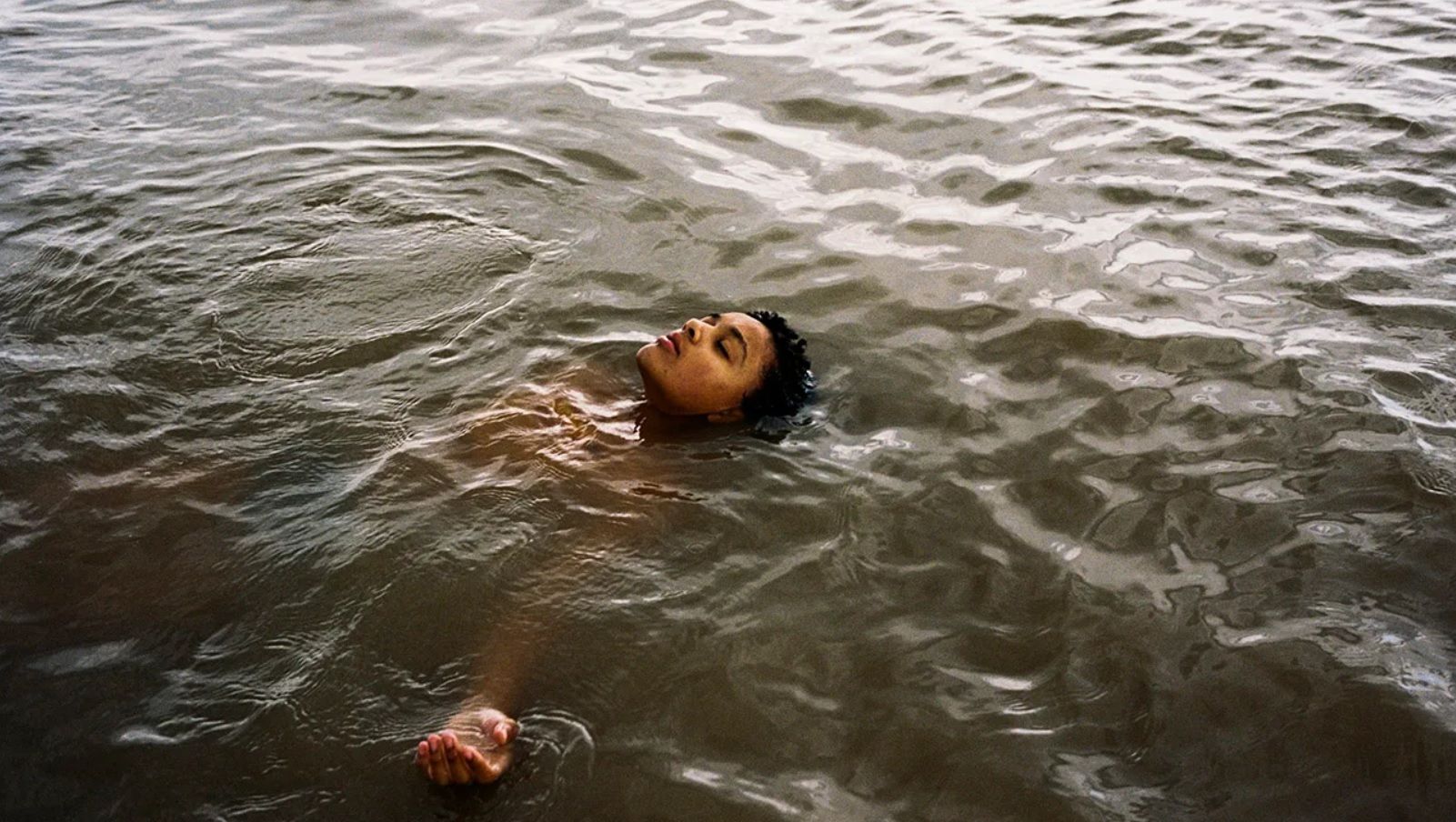
“Bird” is directed by Oscar-winner Andrea Arnold and stars Barry Keoghan and Franz Rogowski, both of whom are hugely taking off. How was the experience of working with such an incredible cast and crew?
I have always been a massive fan of Andrea Arnold's work, so from day one I felt like an overly eager film-enthusiast, pinching myself from time to time, letting it sink in that I was working with her.
It was my second time working with Maxine Carlier, our production designer. Working with her is always a very collaborative and inspiring process. In the design of this film we were playing a lot with realism and magic, seeing how far we could push the sets to create something that is rooted in gritty reality but that also displays a hint of the fantastical, with colour and a lot of personality. Maxine is incredible at navigating all of this, she makes bold choices and her heart is in the process. It was all hands on deck with her, and I found it such a treat that we could get our hands dirty with paint, we would be one minute planning and the next watering plants in the hero house, to graffiti-ng ourselves – it was such an involved process and that for me is great.
As an art director, unless I am asked to make contact for a particular reason, I keep myself away from the cast. I like to walk away from the set feeling we have done our absolute best to create an environment where those incredibly talented actors can let their character unfold and flourish.
Can you share with us some of the process of bringing the world of this film to life from the page?
Maxine had done an extensive amount of research into the world of "Bird" by the time we came on board, which we then unpacked and realised together. The locations we worked on felt as though they had their own stories to tell, and we were in close contact with local people. Even we in the art department kept our eyes peeled and engaged with the locals if we thought they could be part of the film. The sense of community in the town, and within the film and the art department, was incredibly strong and moving.
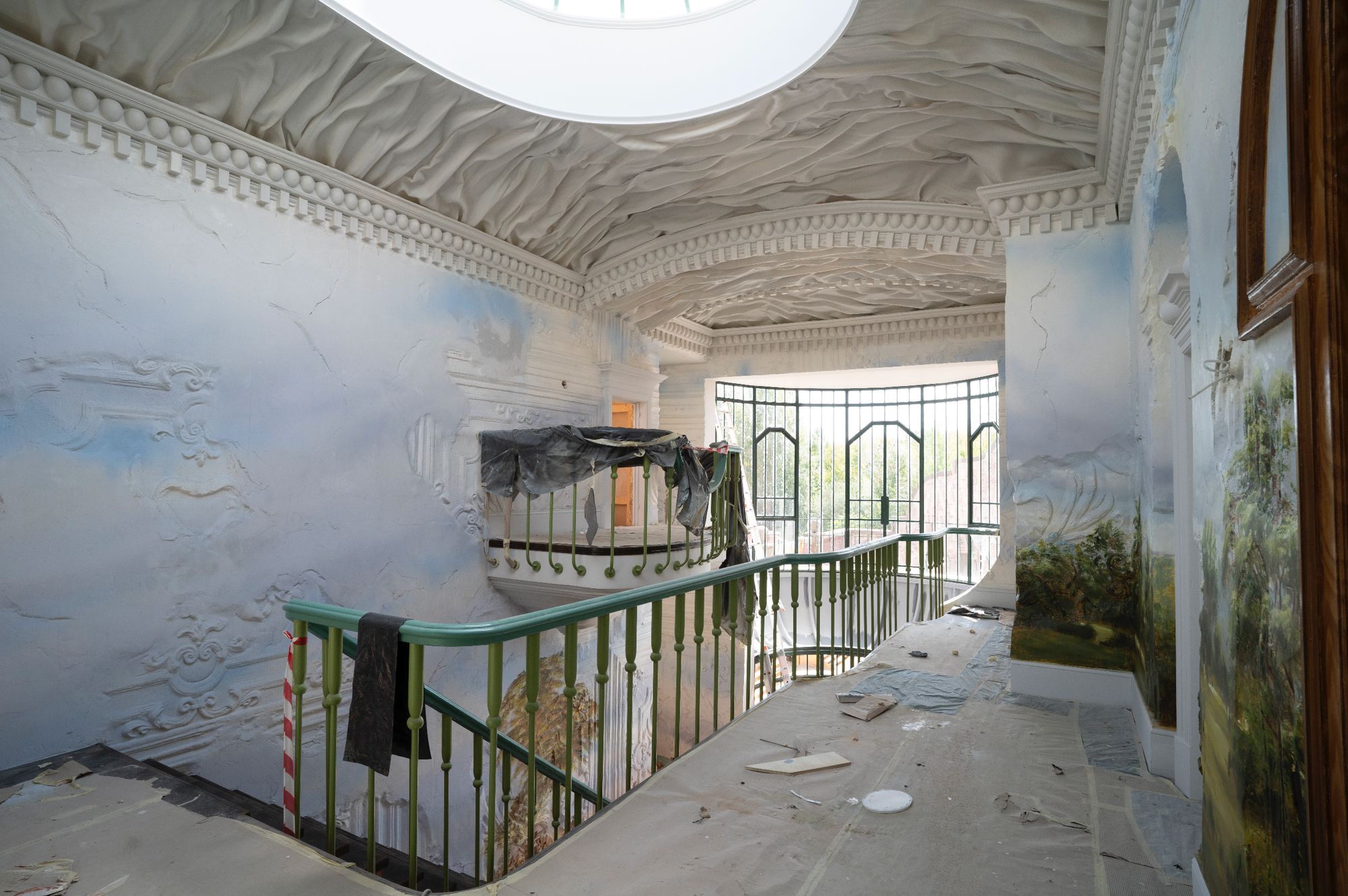
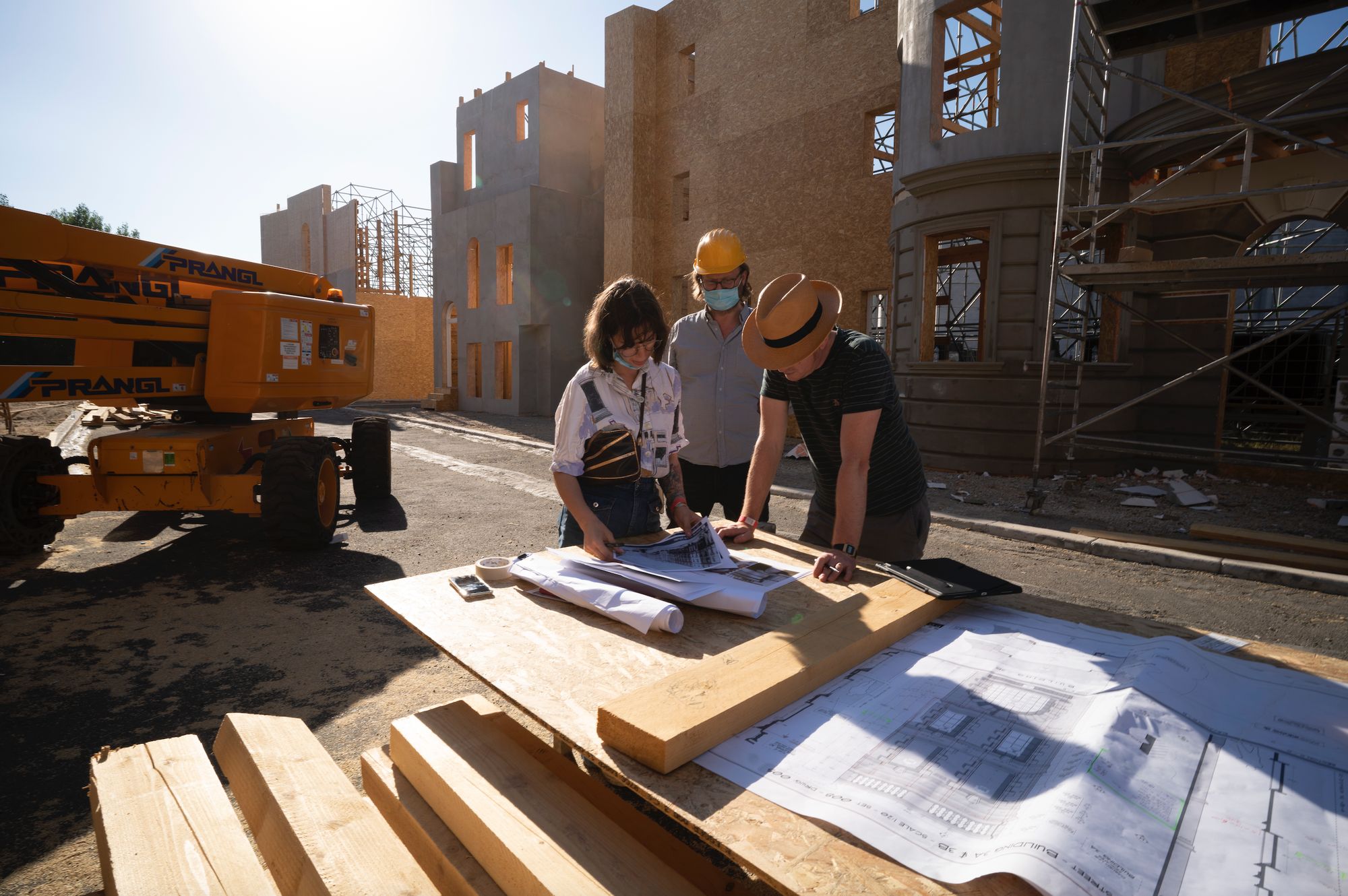
Of course, you also worked on the multi-award-winning “Poor Things”. How was that experience?
Working on "Poor Things" was one of the most challenging and unique experiences of my career. At times, we were up on the ladder with our amazing scenic artist, trying to figure out how to achieve a 'shell' effect, other times I was laying on an oversized paper with the printed outline of a bubble covering myself with thick latex sheeting experimenting what size of bubble would work for a chapter heading. While it was one of the biggest productions I had ever worked on, the process felt the closest to film school - experimenting and playing are of course key to a creative process and on "Poor Things" we had the opportunity to do exactly that. The production designers James Price and Shona Heath are creative heroes of mine, and working with them on "Poor Things" changed the way I think about production design.
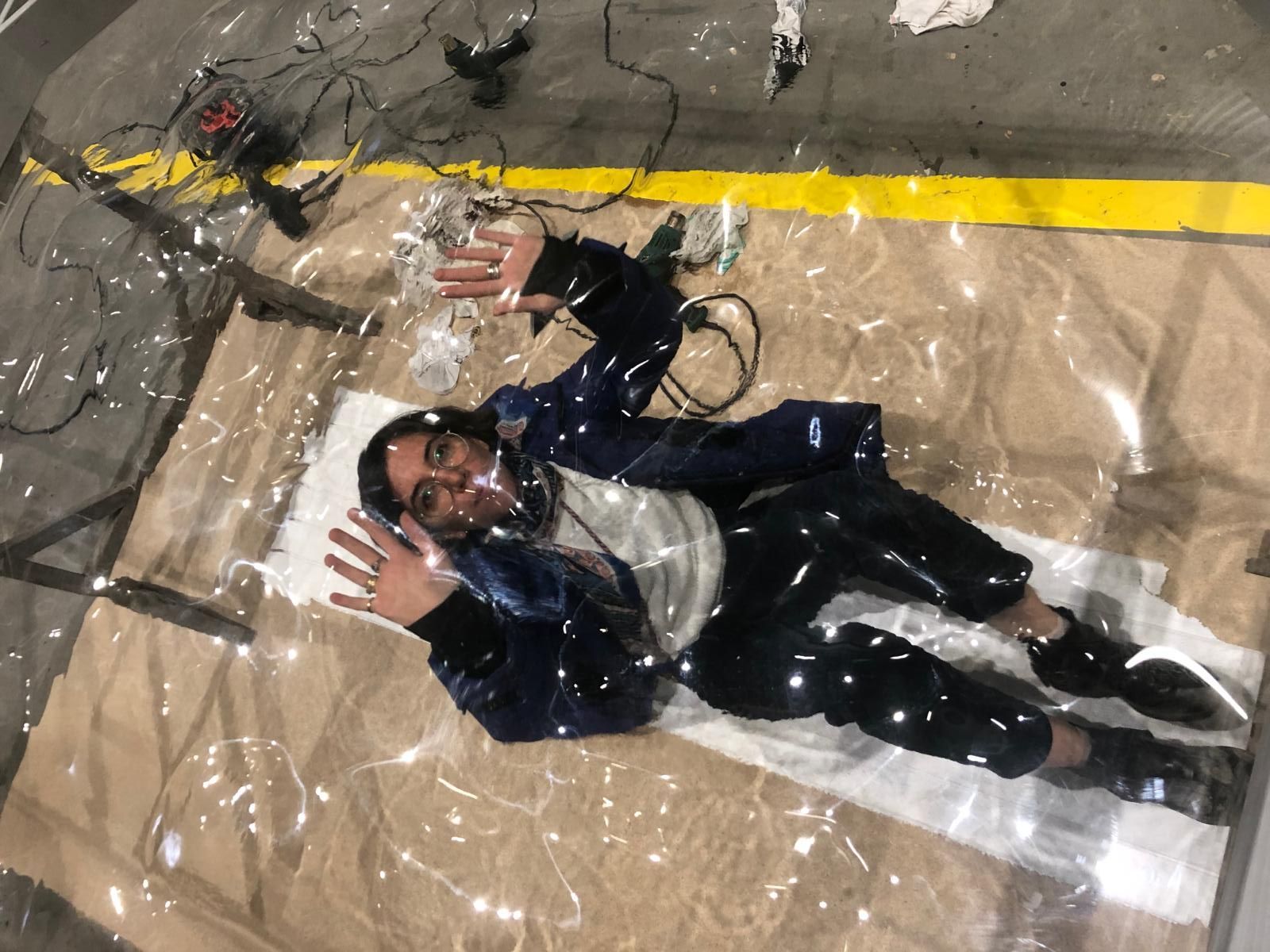
What is your favourite part of your work as a production designer and art director?
My favourite part of art directing and designing is being part of the process of taking words you initially read on paper and making them into a reality; to walk around in a physical space that was created by many hands, but motivated by one script.
I love seeing how ideas evolve and grow as more and more people are involved. I am also intrigued when I get the opportunity to switch between a tiny detail and the big picture. I am looking at this door handle for example, is it ornate, is it brass, what door is it fixed on, where is it damaged, how does this make sense, and then I step out and look at a whole set and understand how each one of these elements have meaning, purpose and importance on a level.
My other favourite part is seeing the set destroyed, seeing a location brought back to its original state. Letting go of sets, creations and ideas is, I think, crucial to our jobs.
Could you tell us a bit about your experience at Berlinale Talents, any particular highlights or things you took away, new collaborators etc?
I feel so honoured having been part of Berlinale Talents 2020. There was so much going on at the festival, meeting so many filmmakers from different parts of the world, talking to them, learning about their journey as filmmakers, I found it all fascinating. In fact, it actually gave me much more than I expected as a number of the Talents I met there became not only my collaborators but my close friends for life.
Do you have any advice for emerging professionals in your field?
My advice is to 'make' and 'try'. Keep making films - even if nobody is watching, even if you get stuck in the moodboarding stage, or your short film script nobody reads, or it is just a collection of images, a random sketch or sentence... make things regardless of being fearful it might not be good enough, push against wanting things perfect, get in the habit of trying. Try against the odds. And apply to every single scheme and talent support program you can.
And tell your journey, share your thoughts with your own words.
Lili is a production designer based in London, working across the UK and Europe.
Born in Hungary, she moved to London at age 18 to pursue a career in filmmaking. She graduated from the University of the Arts, London.
Her production design credits include BAFTA nominated and Academy Award Shortlisted short film 'Wale', British Film Designers Guild Award winner 'Catch a Butcher', and Aesthetica Short Film Festival winner 'O, Glory'.
Her first feature film that she production designed is in post-production and titled ' Two Neighbours' , directed by Ondine Vinao.
Lili has worked alongside some of the most established designers in the industry as an assistant and assistant art director on projects such as Sean Durkin's 'The Nest', Yorgos Lanthimos' 'Poor Things', Television series 'The Ipcress File' and HBO television series, 'The Regime'.
Her art director credits include Tom Hardiman's 'Medusa Deluxe', Ken Loach's 'The Old Oak' and Andrea Arnold’s 'Bird'.
Lili is a Berlinale Talent Alumni, BAFTA Connect Member, and Warner Bros. Creative Talent Alumni.
Lili is represented by UTA, United Talent Agency, by Hannah Phillips.
Find out more about Lili's work here.